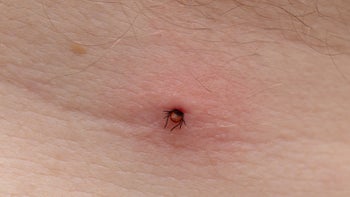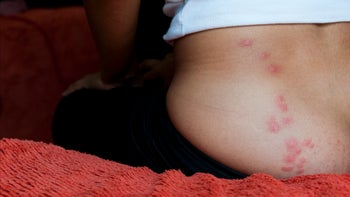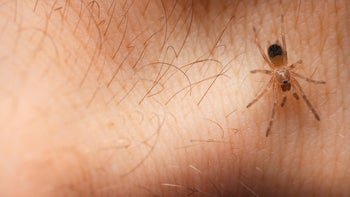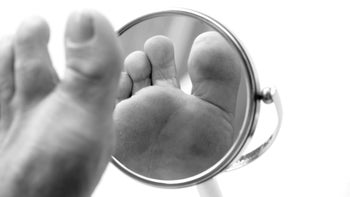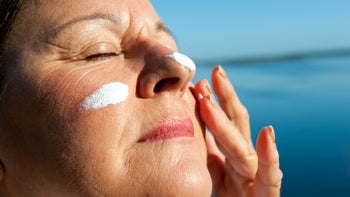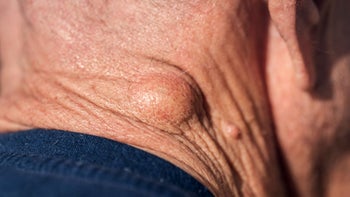
What Does a Spider Bite Look Like? Signs, Symptoms, and When to Seek Treatment (With Pictures)
Key takeaways:
Spider bites look different based on the type of venom the spider has and how sensitive you are to it. Spider bites can change in appearance within hours.
Most spider bites in North America aren’t dangerous and can be treated at home. The goal of treatment at home is to control pain and prevent infection.
Signs of a serious spider bite include developing an open sore or drainage, muscle aches, headache, abdominal pain, or fever. You should seek medical attention for these signs of a serious spider bite and for bites on small children.
Table of contents
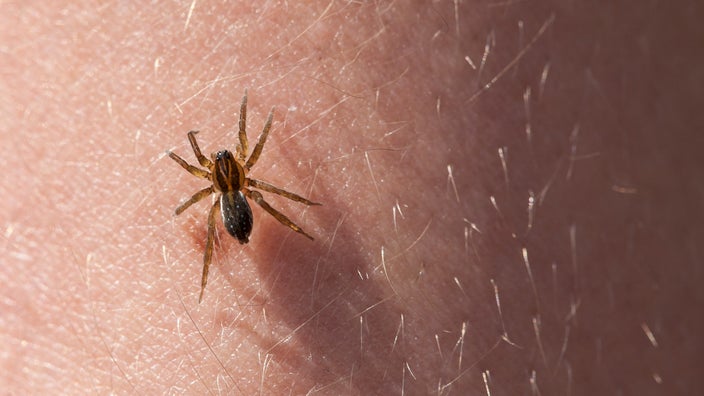
The thought of a spider bite and the harm it could cause can be scary. Although there are thousands of species of spiders in the world, only a handful of spiders are poisonous to humans.
Almost all spiders make some type of venom. But spider bites aren’t usually dangerous. That’s because their fangs are either too short or delicate to break the skin, or their venom doesn’t affect people. Fortunately, very few poisonous spiders are found in North America.
Even though there are few poisonous spiders, their bites have to be taken seriously. Left untreated, spider bites can become infected or cause serious tissue damage. Very rarely, a spider bite could be deadly. Let’s take a closer look at spider bites and what to do if you’ve been bitten.
Search and compare options
How do I know if I got bit by a spider?
Sometimes, it’s really hard to know if you’ve been bitten by a spider — especially because signs of most spider bites aren’t very specific. Common spider bite signs to look for include:
Sudden pain or itching
Two small breaks in the skin or a small red bump
Redness
Swelling
Target-shaped or bull’s-eye rash on the skin
Dark or discolored area on the skin
Development of an ulcer in 3 to 4 days
Development of muscle cramps, headache, and/or severe pain
Spider bite symptoms can sometimes look similar to injuries caused by other biting insects or other skin trauma. But the mark on your skin could be a spider bite if:
You see a spider on you
You’ve been in an environment where spiders like to hang out
Things that increase the likelihood you’ve been bitten by a spider include:
Being in secluded, dark places (like attics, barns, or cellars)
Being in tall grass or wood piles
Putting on clothes or shoes without shaking them out first
Symptoms of a dangerous spider bite
Here are some symptoms of a dangerous spider bite. If you notice any of these, seek immediate medical care:
Nausea, vomiting, or diarrhea
Weakness
Fever
Feeling lightheaded, drowsy, or faint
Headache
Muscle spasms
Rapid swelling, a large sore, or black tissue at the site of the bite
Need to treat a bug bite? Find out which remedies to try that will give you fast relief.
When to worry about a spider bite: From black skin to spreading redness, learn the signs that a spider bite needs treatment (with photos).
Signs of a tick bite: Learn how to recognize the signs of a tick bite rash (with pictures) and when you should seek medical care.
What does a spider bite look like?
Spider bites don’t all look the same. And they can look different on different people. Spider bites may look different depending on:
What type of spider caused the bite
How much time has passed since the bite took place
How much venom was injected
How strongly you react to the venom
Here are what some common spider bites can look like, followed by different pictures.
Read more like this
Explore these related articles, suggested for readers like you.
Spider bite rash
A spider bite rash can range in color from pink, red, violet, or brown. It can also have different appearances, including:
A bull’s-eye rash
A firm, smooth bump
A flat, spreading rash
A dark crust surrounded by skin discoloration
Fang or bite marks
Sometimes, it’s possible to see the actual fang marks left by the spider. These usually look like two tiny, side-by-side holes in your skin.
Swelling blisters and lesions
Spider bites can also cause fluid-filled blisters and skin sores. These may be surrounded by red, brown, or black skin discoloration.
Spider bite pictures
Here are some spider bite pictures to help you identify signs of different types of spider bites.

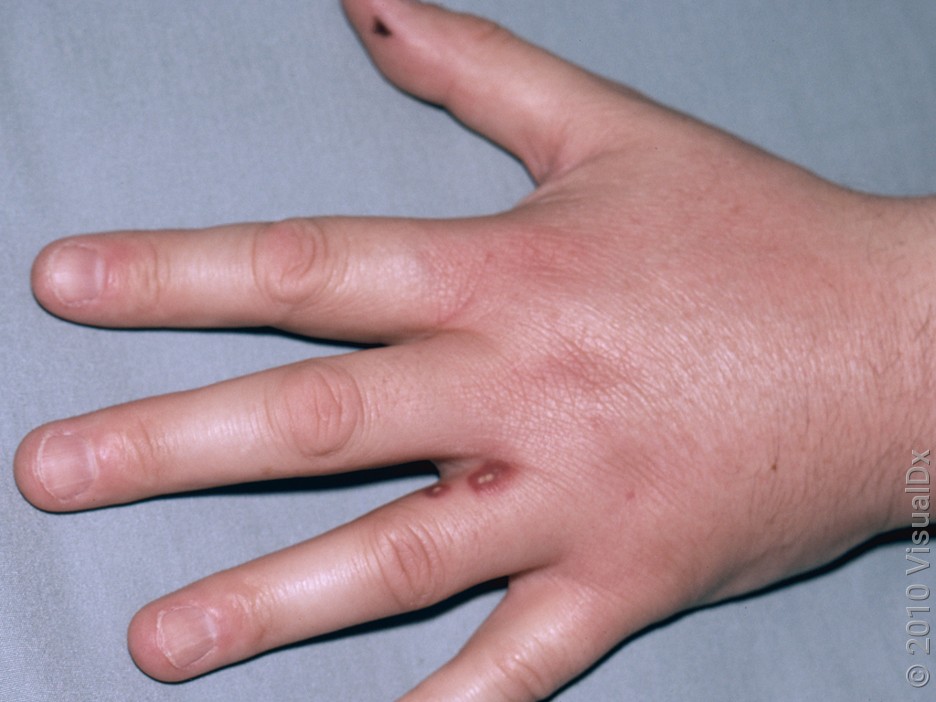
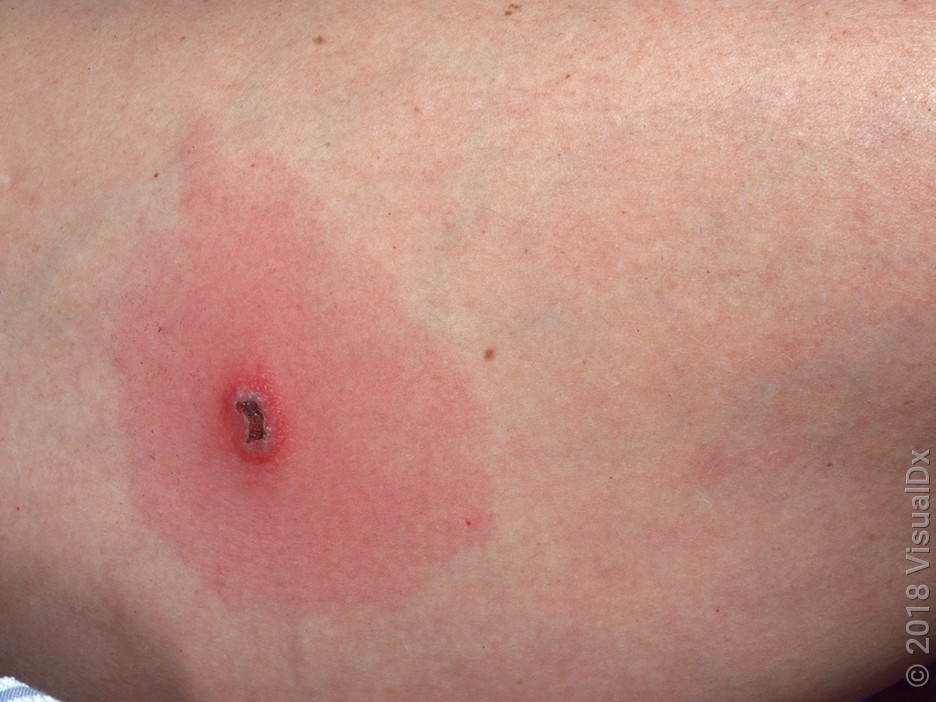
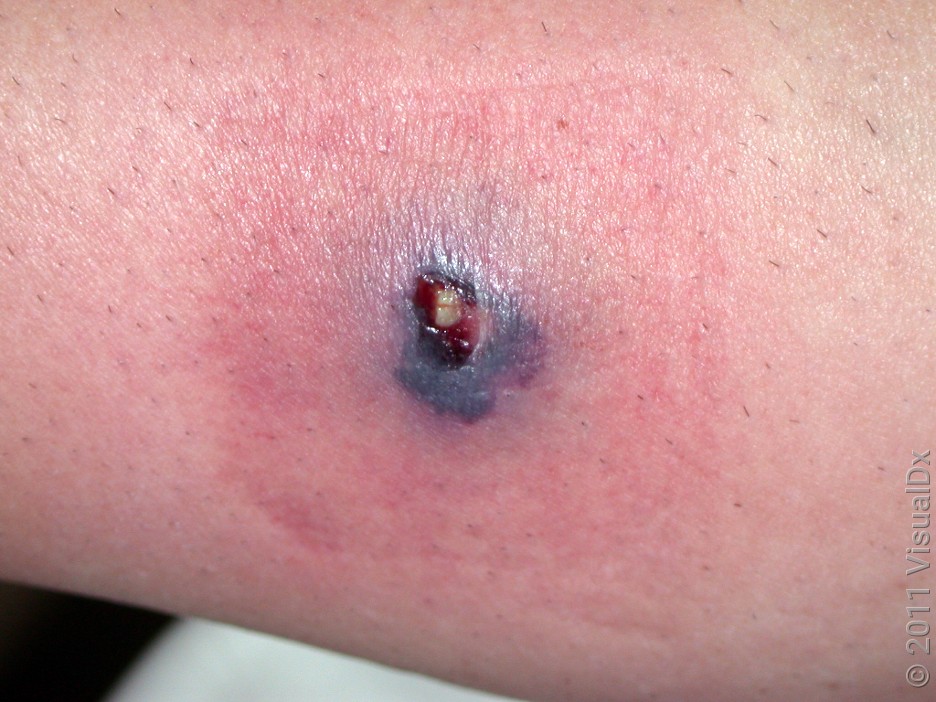
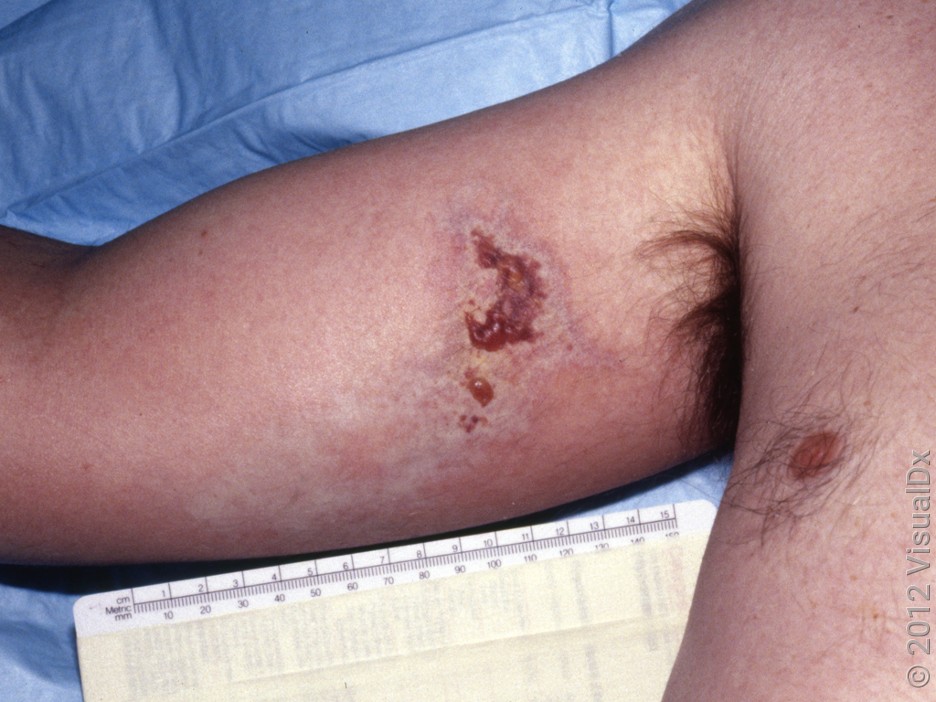
Black widow and brown recluse bites
Two of the most common dangerous spider bites are from brown recluse and black widow spiders. Here are some signs to look for.
Brown recluse spider bites
A brown recluse spider bite is usually painless at first. But then it can become inflamed and painful. The bite can cause localized tissue death, which leads to blistering, an open sore, and black skin. More serious symptoms are less common, and they usually happen within 3 to 7 days. These can include:
Fever
Chills
Nausea and/or vomiting
Joint pain
Seizures

Black widow spider bites
A black widow spider bite usually hurts right away, even though there may not be a lot of skin inflammation or discoloration. Within 2 hours, the following symptoms may occur:
Pain throughout the body
Muscle cramps
Nausea and/or vomiting
Trouble breathing
Fever
Which spiders are most likely to bite?
According to experts, spiders in the U.S. aren’t normally aggressive. But any spider can bite, especially if it’s being disturbed. Although rare, the most dangerous spider bites are ones caused by brown recluse and black widow spiders. Although less severe, common bites also come from these spiders:
Wolf spider
Garden spider
Trapdoor spider
Mouse spider
Huntsman spider
Running crab spider
Green lynx spider
False black widow spider
Jumping spider
Tarantula
Orb-weaver spider
Crab spider
Parson spider
Keep in mind that if you’re allergic to the venom, even a normally mild spider bite can be serious. In rare cases, they can cause severe allergic reactions, like anaphylaxis (more on this below).
What to do if you suspect you’ve been bitten by a spider
Most spider bites are harmless. But any break in the skin can lead to an infection. Following these simple steps will help control pain and reduce the risk of infection:
Wash the area with soap and water right away.
Place an ice pack on the area of the bite.
Take an over-the-counter pain medication, if needed. Acetaminophen (Tylenol) or Ibuprofen (Motrin, Advil) are good options.
Use an antihistamine like diphenhydramine (Benadryl) for swelling.
Get medical attention for young children or adults with serious symptoms.
Get a tetanus booster if your vaccines aren’t up to date.
How do I know if a spider bite is getting infected?
Despite your best efforts to clean the area, a spider bite could still get infected. Some of the signs of a spider bite infection include:
Redness or swelling extending out from the bite
Warmth in the area
Pain
Yellowish drainage (pus)
Fever
Signs of an infected spider bite can overlap with signs of the bite itself. The thing to keep in mind is that most spider bites should get progressively better after a day or two. If the symptoms are getting worse, it could be a sign of infection or that a venomous spider caused the bite.
When to seek medical treatment for a spider bite
It’s important to take all spider bites seriously. Fortunately, you can treat most spider bites at home. But sometimes you may need to get medical treatment. Here are some things that should prompt you to seek medical treatment:
You recognize the spider as being poisonous (or if you suspect it is).
You experience headache, abdominal cramping, or nausea and vomiting.
You feel pain that continues to get worse or spreads elsewhere on your body.
You see yellowish discharge (pus) drains from the area, or the bite becomes an open sore.
You have fever, chills, joint pain, or body aches.
You feel pain, redness, or swelling that continues to get worse after 24 hours.
In rare cases, spider bites are a medical emergency. You should get immediate care if you have any of these signs of a severe allergic reaction:
Rapid heart rate
Trouble breathing or swallowing
Chest tightness
Swelling of your mouth or face
The bottom line
Many people get bitten by spiders every year. The good news: Most spider bites aren’t poisonous and can be treated at home. Even though the odds are small that a venomous spider will bite you, the risks of these bites are dangerous. So, take every spider bite seriously and take precautions to avoid infection.
If you know that the spider that bit you is dangerous, or if you have severe symptoms or signs of an infection, seek medical care right away.
Why trust our experts?



Images used with permission from VisualDx (www.visualdx.com)
References
Centers for Disease Control and Prevention. (2024). Venomous spiders at work.
Diaz, J. H., et al. (2007). Common spider bites. American Family Physician.
Ignite Healthwise. (2024). Toxic reaction to insect or spider venom. MyHealth.Alberta.ca.
MedlinePlus. (2023). Spider bites.
Rahmani, F., et al. (2014). Poisonous spiders: Bites, symptoms, and treatment; an educational review. Emergency.
Rich, R. C., Jr. (2024). What should I do if I get a spider bite? Familydoctor.org.







